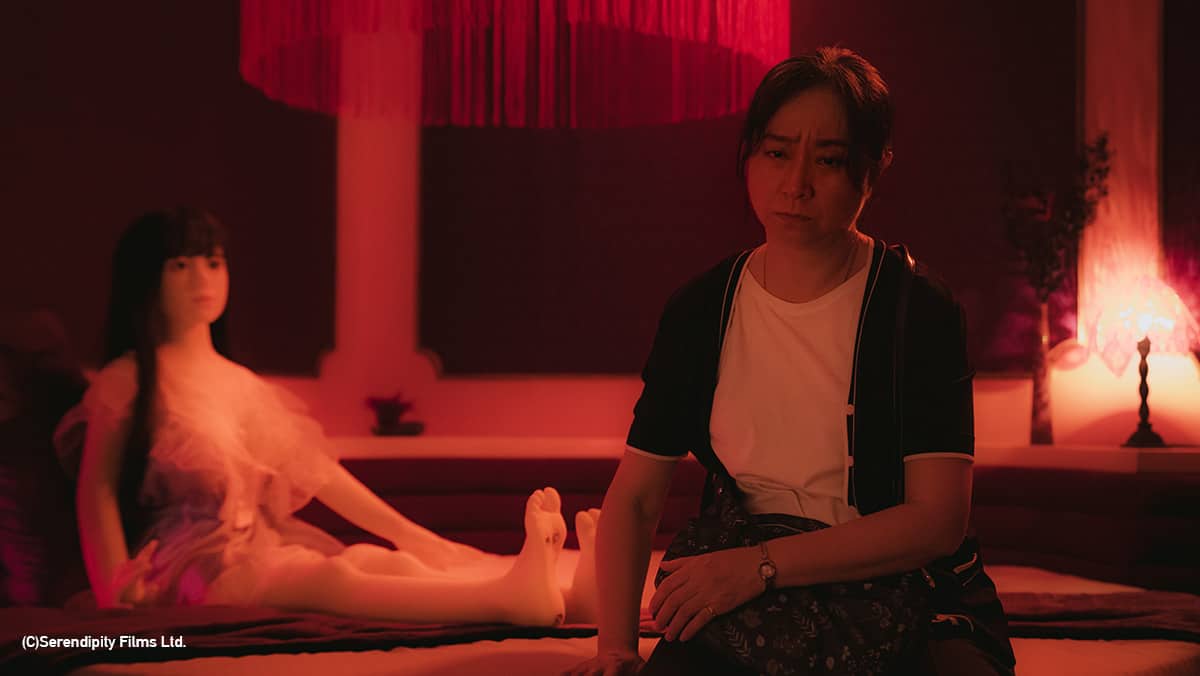A road movie/pseudo-documentary following the band Gui aiueo:S, A Stone from Another Mountain to Polish Your Own Stone, portrays the band as introspective UFO hunters as they traverse across Japan. Split into various chapters in an attempt to set up a narrative, the film can be broken down into a few different scenes. Specifically, driving with no set destination, walking through the woods aimlessly, visiting an old man who talks about his land and a sustainable toilet, going to a carnival, taking a guided tour through the woods and lastly, an experimental musical piece paired with performance art. There are a few scenes spattered in between these moments, but they are short in both length and content to really be of note.
The film utilizes many different angles to capture the band while they wander around, with the desired effect to be a sort of passenger to their exploits, possible standing off to the side, or sitting down with the band as they take in their environment and make casual observations. However, this is done in a sloppy style and comes across as unintended laziness. It feels as if the camera was just placed on a chair or on top of a shelf and left to record and this feeling is enhanced by the fact that each cut into something leaves a sentiment that the viewer is being introduced mid conversation or mid scene. Nothing really feels set up, which should be would be OK for an experimental film such as this, if it were not for what is shot coming across as dull and uninspiring.
The audio is a real patience tester with the most pervasive sound being that of feet shuffling or wind blasting, rushing by as they drive along in their car. For a documentary about a band there is little music, some during the intro and there is a scene near the end that plays like an experimental music video, utilizing noise and experimental performance art. Mostly, the movie is dominated by horrible white noise and poorly recorded dialogue. It is really baffling that Go Shibata only used music in the credits and for a brief scene at the end, given his subjects being part of a musical group.
There is no reason given to have an interest in the members of the band and their dialogue is so minute and the majority of screen time is them staring at something only slightly more interesting than their vacant glares. Most of the dialogue comes from other sources, and those sources are not really interesting or engaging. For example, the film contains a long monologue about a sustainable toilet, which although informative, will not engage any viewers.
With Go Shibata's phenomenal job on merging music and visual experience in his film “Late Bloomer” I was drastically let down by this film. I could have forgiven it for it's lack of content, which was overly tedious, if it had strong visuals to carry it through. The only scene that elicits some attention comes at the end, when music is finally utilized and coupled with some interesting visuals. This scene is reminiscent to the stand out in experimental audio/visual experiences, Einstürzende Neubauten's Halber Mensch. Unfortunately, this fleeting moment of sublime audio/visual anarchy does not make up for the faults of the rest of the film.















